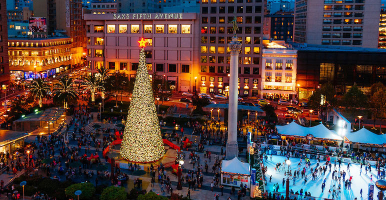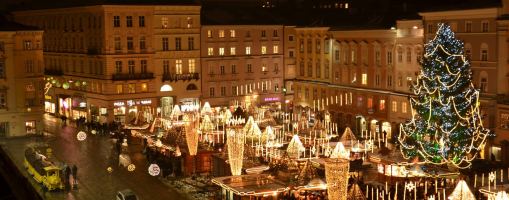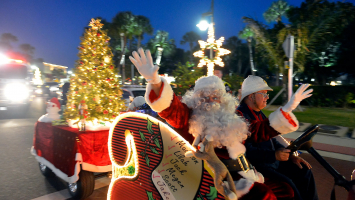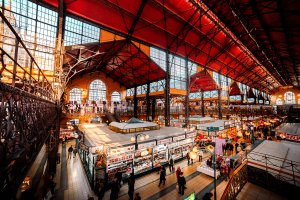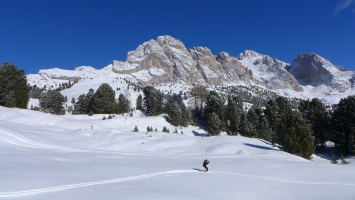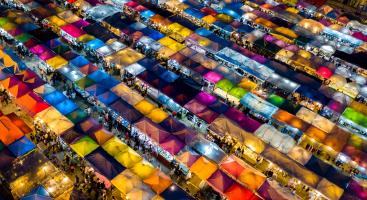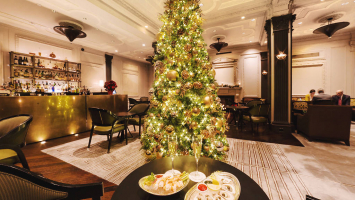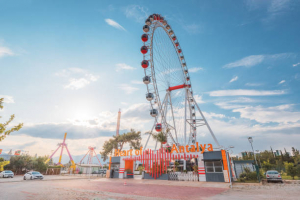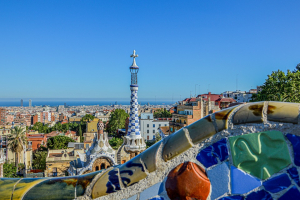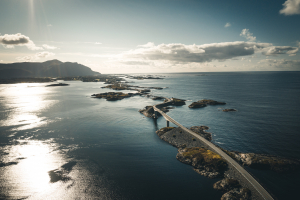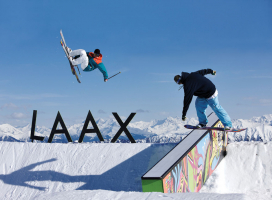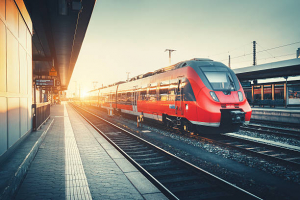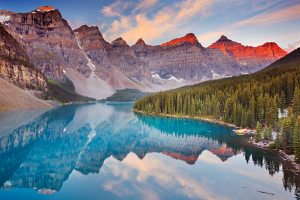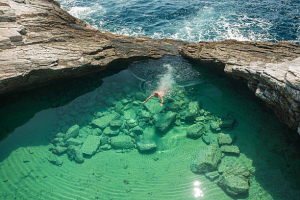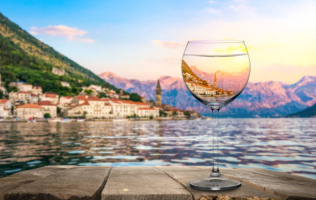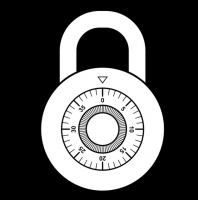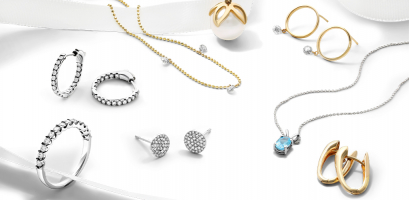Top 10 Best Christmas Markets in Europe
Christmas and Advent are one of Europe's oldest traditions, a time when friends and family get together after work or on the weekends before Christmas, and ... read more...then go to the local Christmas market. Plan your trip with this list of the best Christmas markets in Europe below!
-
Since at least the 1500s, the Hauptmarkt in Nuremberg has been crowded with holiday shoppers at one of Germany's most well-known and historic Christmas markets. With the cathedral's magnificent pinnacled front floodlit in the background and tall medieval buildings around the square, the location also makes it one of the prettiest.
Colorful market with fresh fruit and vegetables, bright flowers, crispy bread, and other treats. On weekdays at the Nuremberg Hauptmarkt (main market) you can buy regional and international specialties, have a chat with the market woman and enjoy the medieval flair of the centuries -old square. The diversity of products offered here is mind-boggling, ranging from delicate glass and wood Christmas tree ornaments to vibrant wooden toys, knit hats, and traditional nutcrackers with stern faces. Nürnberger Lebkuchen, rich spiced honey cakes in a range of sizes and shapes, top the list of local products. These are a staple of German Christmas markets, but Nuremberg is where you can find them. The whole family will have something to do here thanks to the dazzling carousel and kid-sized train in the section designated for children.
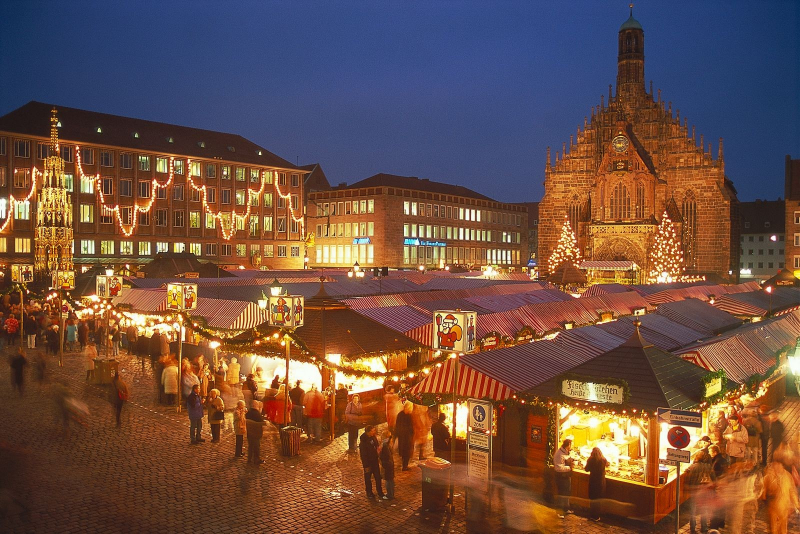
Nuremberg, Germany 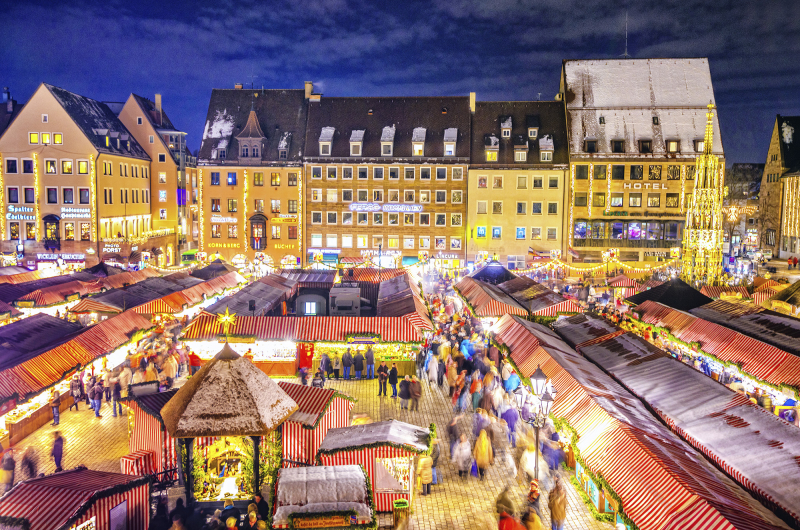
Nuremberg, Germany -
Strasbourg is in Alsace, a region with strong ties to French and German cultures. It is located alongside the Rhine River and across from Germany's the Black Forest. It hosts a holiday market and you will be surprised because of the number and variety of them as well as the quality of the goods you may get here.
Waterways meandering among half-timbered buildings line the streets, adding immeasurably to the setting. There is one market devoted to international craftspeople, featuring the specialties of another country each year. The Christkindelsmärik at Place Broglie in the center of the Grande Île, a UNESCO World Heritage Site, is the oldest of the markets. The market along the water in the Petit France area is equally beautiful. Alsatian specialties are the focus of an entire market at Place du Marché-aux-Poissons. The Great Christmas Tree and the Village du Partage (Village of Sharing), where each booth supports a charitable organization or human rights issue, coexist in Place Kléber. Visit the information desk at the train station to get the helpful map that details the locations and specialties of each market before venturing out.
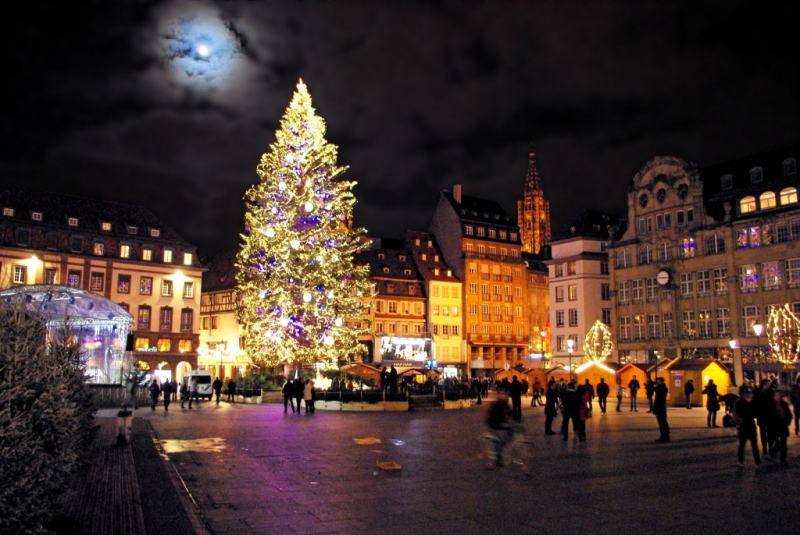
Strasbourg, France 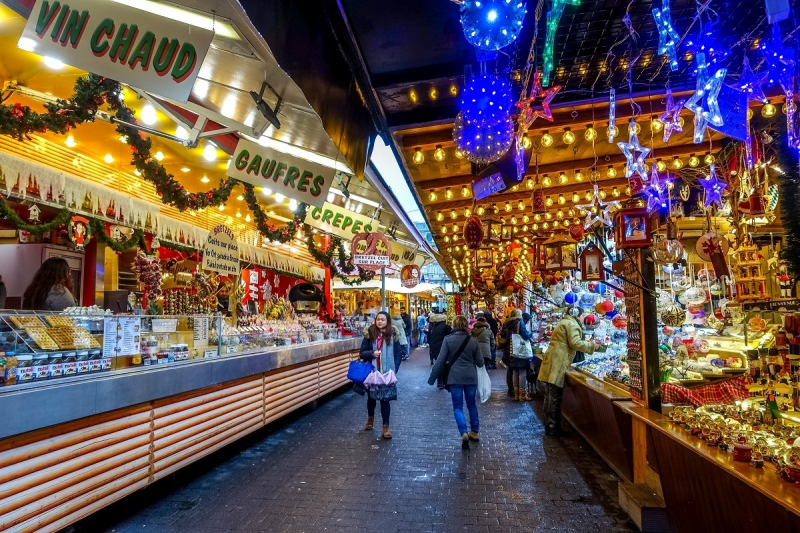
Strasbourg, France -
Munich's beautifully lighted streets in December give the impression that the entire city is one big Christkindlmarkt, but a closer look reveals that they are all actually quite different. From wooden houses filled with traditional frosted gingerbread hearts and Christmas tree decorations to a market where everything for sale is straight out of the Middle Ages, they come in all shapes and sizes. One is devoted to creche figures only, while the other is focused on cutting-edge design.
Start at Marienplatz, where a glockenspiel in the tower above performs a routine every day at 11 am that includes a jousting match. Marienplatz is beneath the magnificent façade of the town hall. There has been a market here since at least 1642, and there are more stalls in the area beyond the city hall. You can reach a square with every cabin decorated with creche figures after a two-block walk. Wittelsbacher Platz is home to the medieval market, where craftspeople dressed in historical costume tend colorful pointed-roofed tents filled with leather, ironwork, woodenware, hand-bound books, and other items from the time. Even your own authentic costumes can be bought.
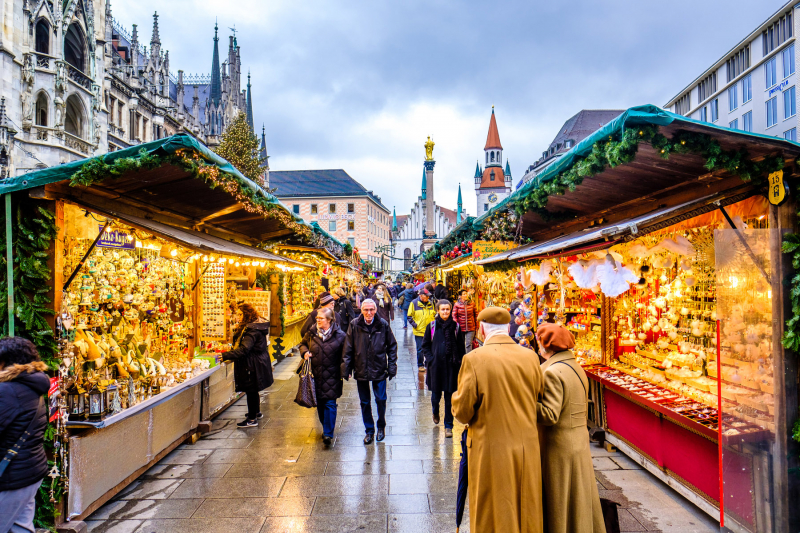
Munich, Germany 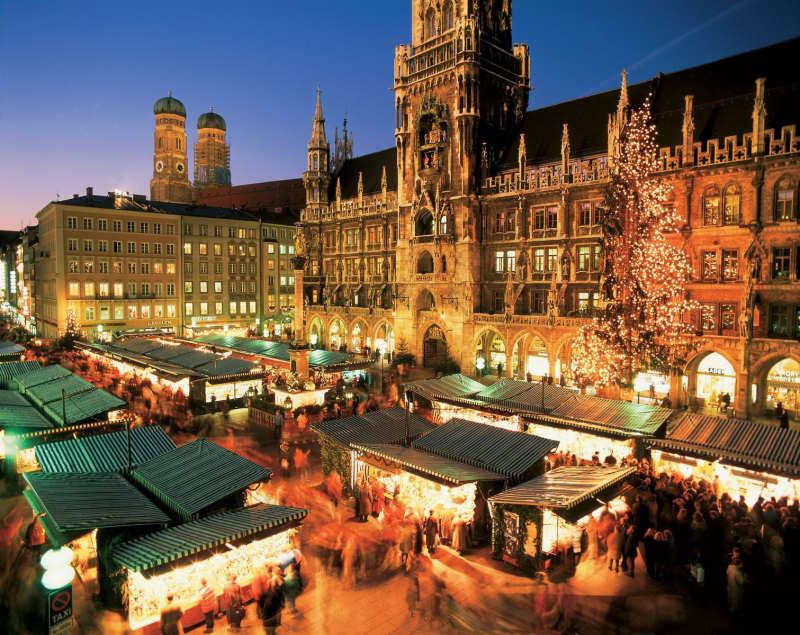
Munich, Germany -
AdventZagreb, a holiday extravaganza of lights, music, delicacies, and celebrations, takes place in the Croatian capital every December and lasts until January 7. The festival is held in many locations across Zagreb, particularly in its parks. The promenades and fountains in Zrinjevac Park are lighted by lanterns, and decorated wooden cabins in the park also include seasonal dishes (a specialty is trukle, a pastry filled with soft cheese and served warm).
Musicians play in the park every evening and on the weekends in the morning. The enormous Christmas tree and the light show on the fountain in Ban Josip Jelacic Square attract attention, and there is live music every day. The sparkling King Tomislav Square, which has a skating rink and food stalls, hosts additional music events. The heart of the city's traffic-free European Square is lined with stalls offering holiday treats and decorations, and every evening music is played. On New Year's Eve, the city is alive with live music and events; the Changing of the Guard on horseback on New Year's Day is the festival's high point (though it's not the end).
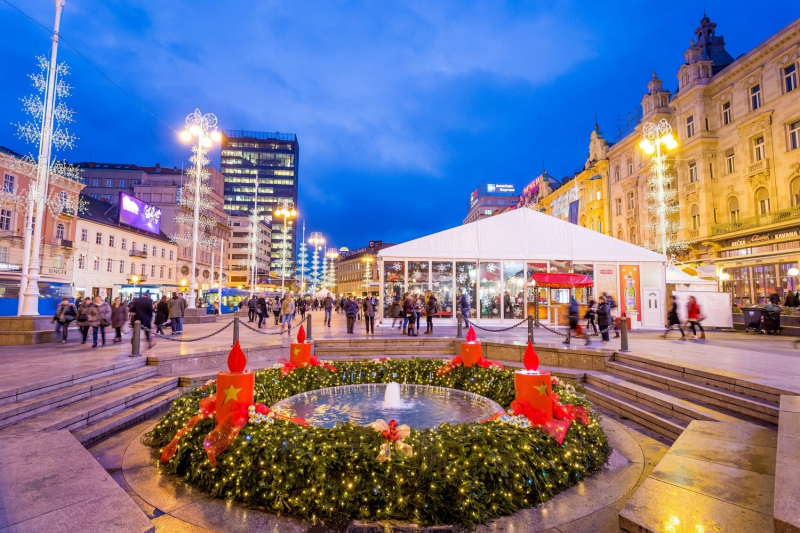
Zagreb, Croatia 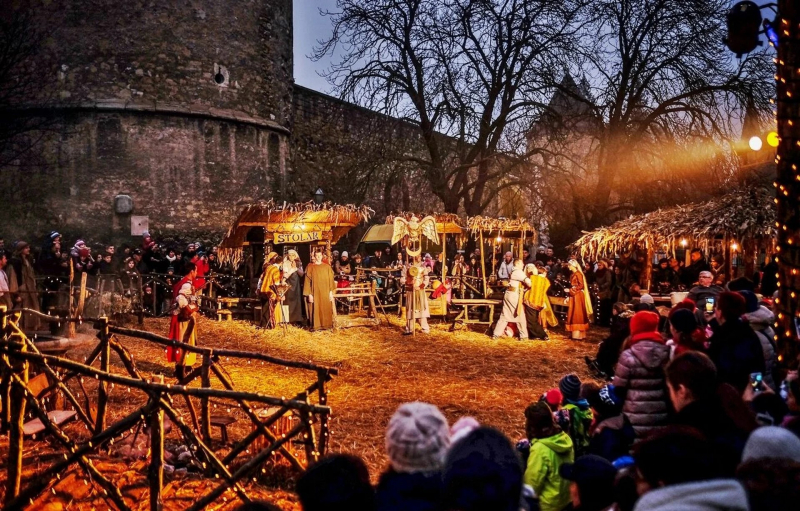
Zagreb, Croatia -
One of Germany's greatest Christkindlmarkets, in Stuttgart, has a unique route that starts in a promenade lined with wooden cabins under the castle's walls and meanders its way through the city. Before arriving at the spacious Marktplatz, the route connects the intimate Schillerplatz with other small squares and streets.
Visitors arriving by train or the city's transit system walk across the expansive Schlossplatz to get to a gate framed in pine boughs. They pass the glittering children's market and a sizable skating rink. With its festive atmosphere, cookie-filled stalls, and Ferris wheel with cars made out of enormous Christmas tree balls, this family-friendly area provides a joyful start to the market. The nearby Baroque Christmas Market in Ludwigsburg is equally visually appealing as the market in Stuttgart. Ludwigsburg's market is limited to high-end handcrafted and locally produced goods and is located in a charming plaza surrounded by Baroque buildings. A nearby street is lined with other cabins, many of which are independent producers of high-quality foods.
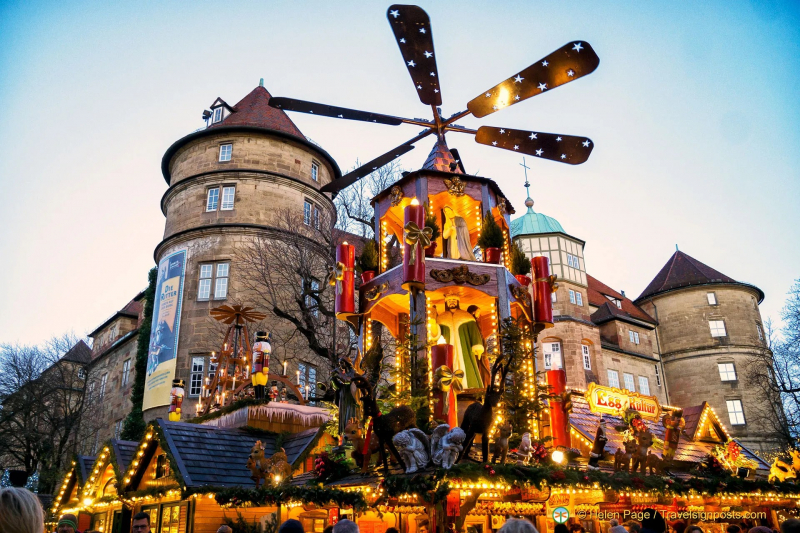
Stuttgart and Ludwigsburg, Germany 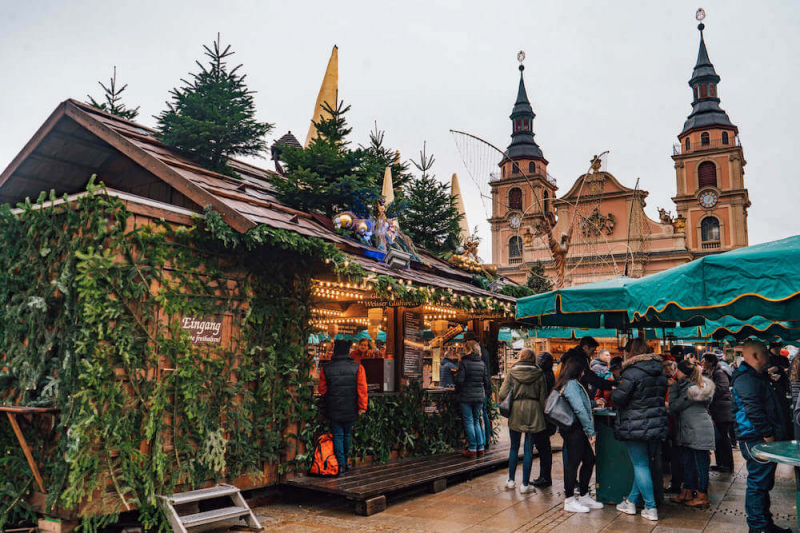
Stuttgart and Ludwigsburg, Germany -
Vienna hosts a number of Christmas markets at various locations throughout the city from mid-November through December 24 (and sometimes longer), with many of them situated at or close to Vienna's most popular tourist destinations. A 30-meter-tall Christmas tree and all the trees in Rathauspark, in front of the City Hall, turn the area into the "Vienna Magic of Advent". A carousel, gift-making kiosks where children may make crafts, and a skating rink are available for them.
For the holiday season, Maria-Theresien-Platz is turned into a Christmas Village, with brightly adorned cabins selling foods, decorations, and gifts. You can find modern crafts and designs made by local artists and crafters in Karlskirche and in the small streets around if you're looking for one-of-a-kind gifts. The markets almost have romantic backdrops, and the Karlskirche and the Gothic Rasthaus have the most lighted facades that make for impressive photo backdrops. Each of the cabins lining the floodlit façade of the Belvedere Palace, the former home of the Prince of Savoy, is topped with a baroque curlicue made of white lights.
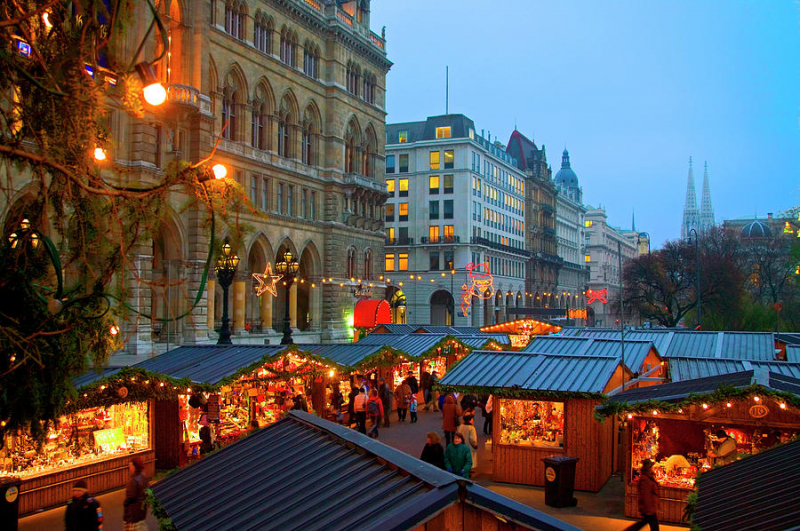
Vienna, Austria 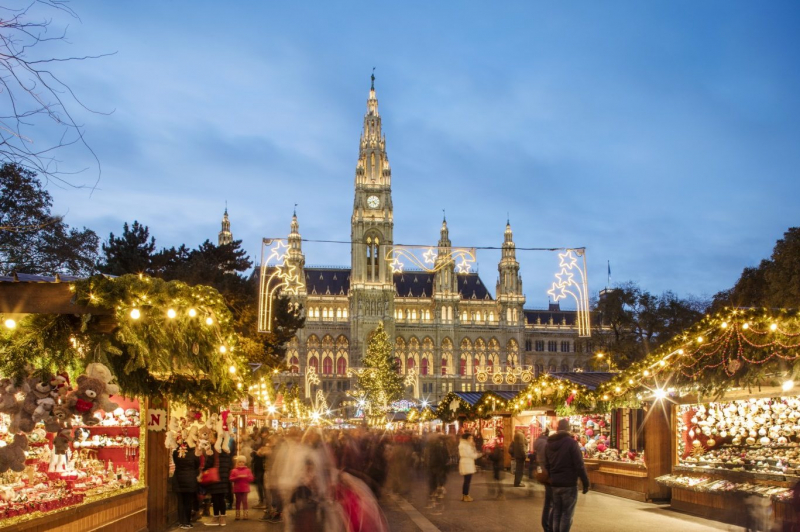
Vienna, Austria -
A special place is designated in Christmas celebrations across the entire nation for the German state of Saxony, which capital city is Dresden. The most well-known fruit-filled Christmas bread, Dresden Christstollen, is firstly made in Dresden. And the famous wooden ornaments that can be found in every Christmas market and shop in Germany originated in the adjacent Erzgebirge. All of these goods, including scowling nutcrackers, candle arches for window displays, candle-powered Christmas pyramid carousels filled with tiny painted figures, and the countless tiny rosy-cheeked angels and Santas that adorn Christmas trees worldwide, originated in the Ore Mountains and are still made there.
The markets in Dresden and the small towns spread around the mountains to its south are very popular with tourists in December. Start in Dresden at the Striezelmarkt, where the stollen is known locally as Striezel. Rewind time to the 1800s in Neumarkt, where minstrels saunter and artisans in period dress sell traditional handmade items. Or you can take a look at the Seiffen, a town in the Erzgebirge known for its wooden toys and filled with holiday stores and market stalls, is worth a visit to view the six-meter-tall wooden pyramid filled with painted Christmas figures.
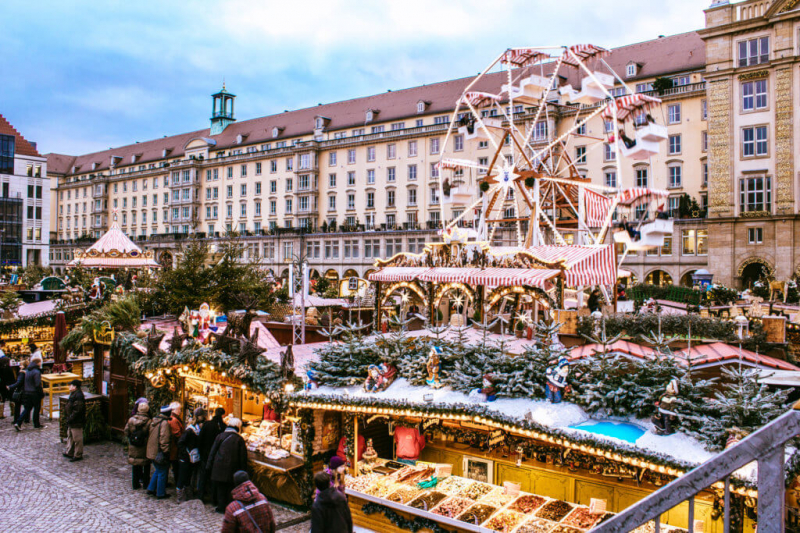
Dresden and Erzgebirge, Germany 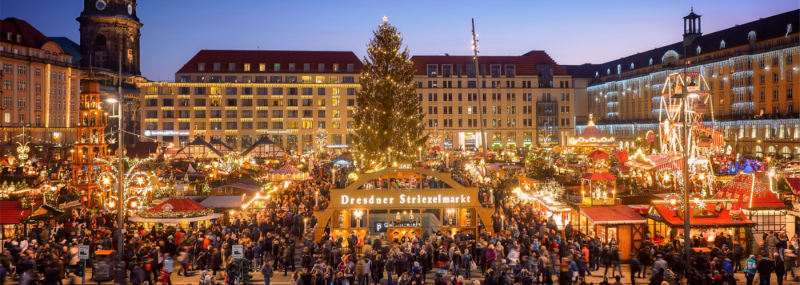
Dresden and Erzgebirge, Germany -
Since 1915, the charming Gamla Stan (Old Town) of Stockholm is brightened by the yearly market in the Stortorget that takes place from late November until Christmas Eve. The market appears to be a small village because of the charming setting of the tall medieval facades that surround the square.
The small cabins are decorated with traditional Swedish handicrafts made of wood, straw, woven paper, wool, and embroidered fabrics. The open-air museum turns into a festive market and studio tour on weekends in the ancient village of Skansen across the harbor. The village is filled with the aroma of baked cookies and bread, while craftsmen show traditional skills inside buildings that have been preserved from all over Sweden. The queen of light is crowned here on December 13 during a festival that features a parade, carols, and regional cuisine. Several of Stockholm's art and design schools have their own weekend Christmas markets, such as the Design Christmas Market, where you can see contemporary and traditional designs in home decor, jewelry, clothing, paper goods, and holiday decorations made by up-and-coming artists.
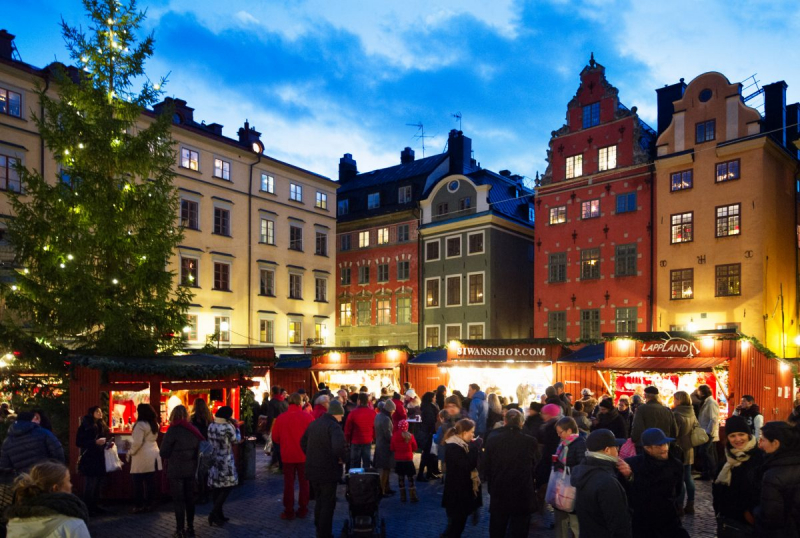
Stockholm, Sweden 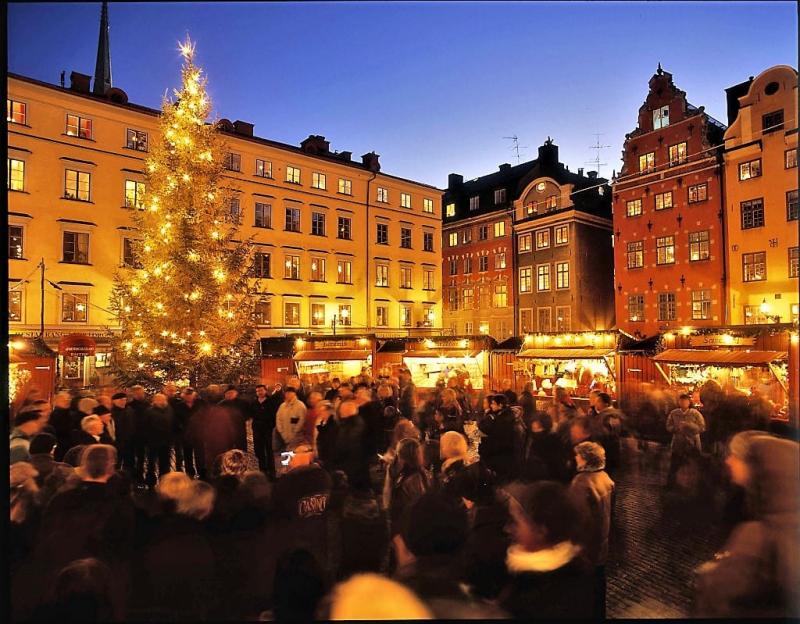
Stockholm, Sweden -
Tourists arriving by train are welcomed by one of Europe's biggest indoor Christmas markets. 150 booths are arranged around a 15-meter-tall Christmas tree that is adorned with thousands of Swarovski crystals at the Bahnhof, the city's major train station.
Outside the doors, there are more markets to explore. Just off Bahnhofstrasse is the Lintheschergasse Christmas Market, where beautifully decorated market huts offer handmade goods. The Wienachtsdorf, a Christmas village in front of the Opera House, has 100 cabins with local designers offering their goods next to vendors selling fondue, raclette, and other traditional Swiss foods. There is a skating rink here, and kids can make their own candles in the nearby Bürkliplatz. The picturesque Niederdorf neighborhood in Zurich's Old Town is home to the city's oldest Christmas market. Hirschenplatz, Rosenhof, and Niederdorfstrasse are all filled with market stalls. This market has a more traditional atmosphere because it is surrounded by some of the city's oldest houses.
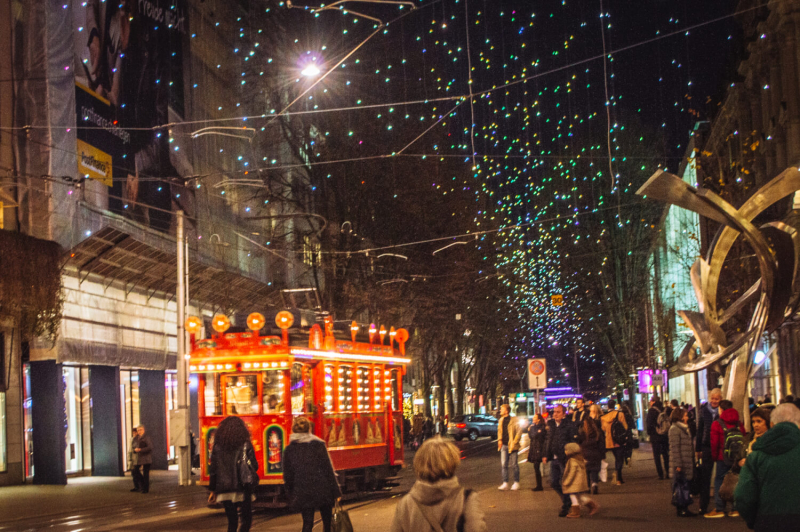
Zurich, Switzerland 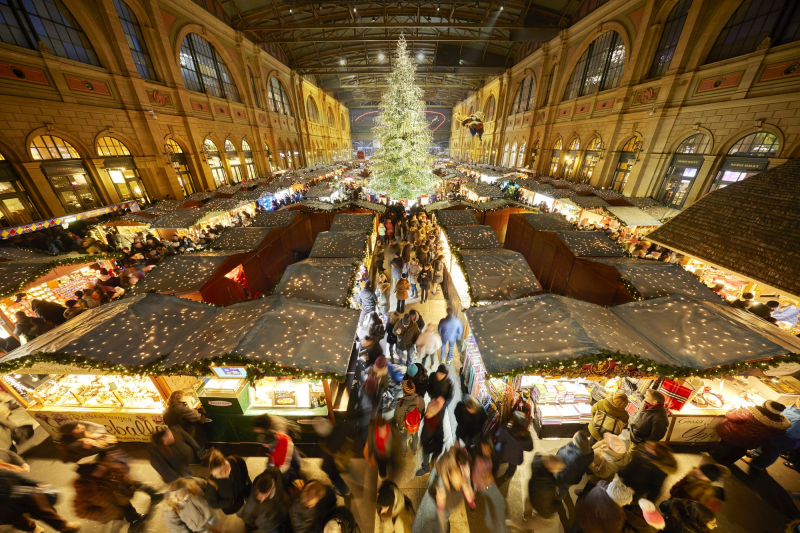
Zurich, Switzerland -
Christmas markets are not an Italian tradition except in towns like Bolzano and Trento, in the Sud-Tirol region, where Germanic culture and language blend with the Italian. But there are now small holiday markets in a number of Italian cities. None of them compare to Florence's enthusiasm for the holiday season when Florence Noel has grown to be a well-known gathering for both tourists and locals.
Thousands of colored lights begin to sparkle throughout the city in late November, and its squares start to fill with Christmas market stalls. Two markets, one in Piazza Annigoni and one in Piazza Isolotto, are managed by Italy's association to promote fair trade. Piazza Indipendenza turns into an Italian-only market starting in mid-December, making it a great place to buy delicacies from other parts of the country. Stazione Leopolda, a historic railway station close to Porta al Prato, completely changes into a fantastic version of the North Pole so that kids aren't left out of the celebration. They can tour Santa's (Babbo Natale) residence rooms and have hot cocoa in the Chocolate Village.
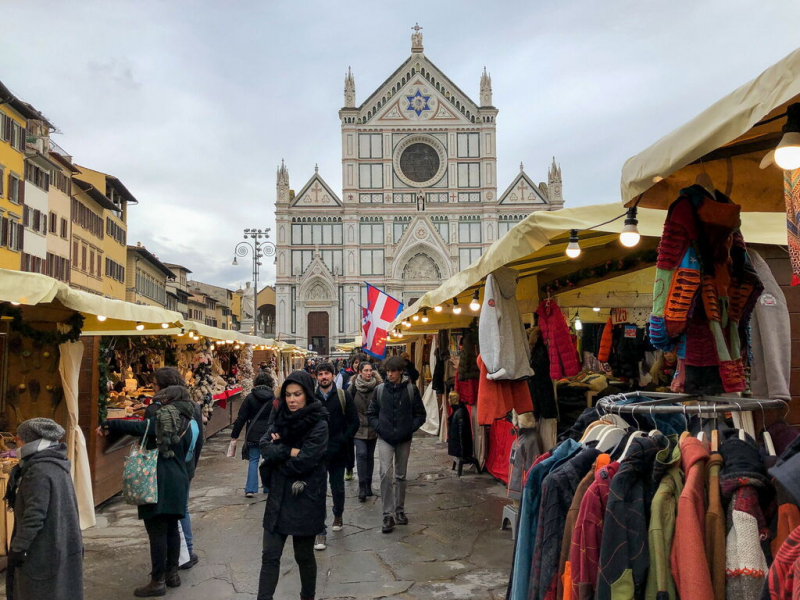
Florence, Italy 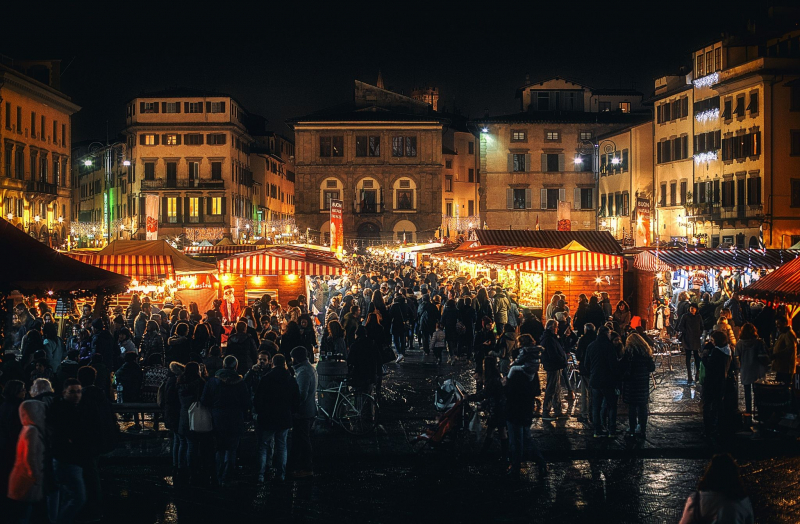
Florence, Italy












